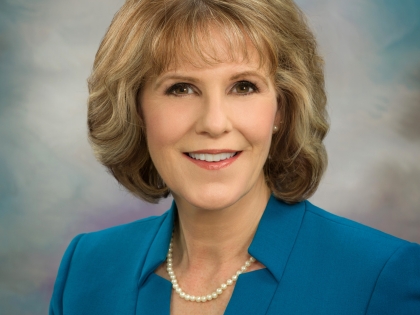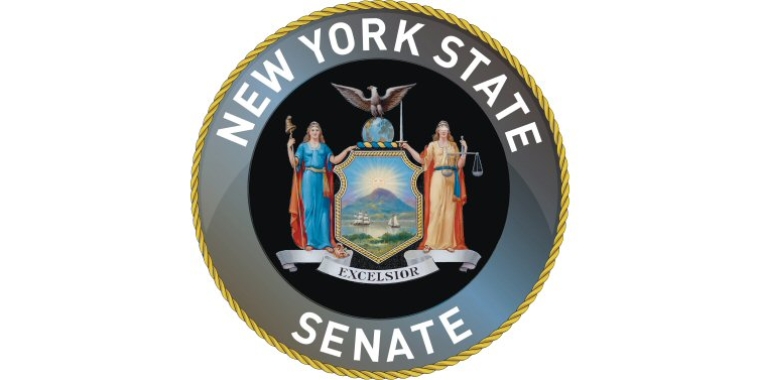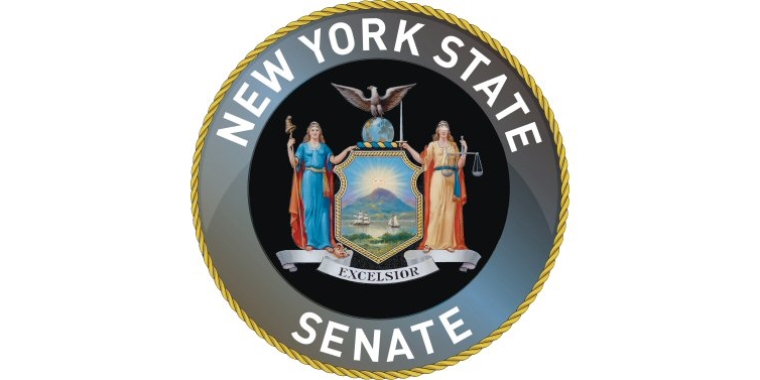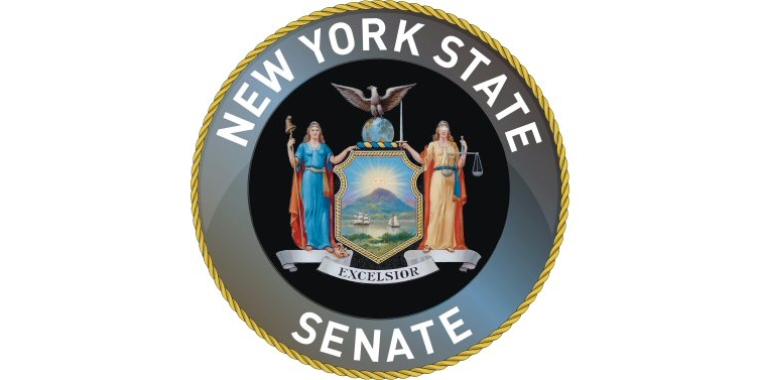
State Senate Passes Legislation to Fight Heroin and Opioid Addiction
Catharine Young
June 9, 2014

For Release: Immediate, June 9, 2014
Legislation Cosponsored by Senator Young Will Enhance Treatment and Prevention
ALBANY - After the successful joint heroin and opioid addiction forum hosted by Senator Catharine M. Young (R,C,I - Olean) and the Seneca Nation of Indians, the State Senate passed 23 bills to battle the alarming rise in the use of heroin and opioids that has claimed lives and devastated families across New York State.
“We received great local input at our forum and much of this information is reflected in the bills we passed. Families who have been torn apart by heroin and opioid addiction spoke about changes that are needed to get this epidemic under control. Prevention, treatment, and enforcement all need to be tackled. Our legislation will make a real difference for those struggling with addiction,” said Senator Young.
The local forum was the last of 18 held across the state by the Senate’s Joint Task Force on Heroin and Opioid Addiction. The task force was set up to tackle the scourge of heroin and opioid abuse affecting communities across the state.
Dozens of experts, parents, recovering addicts, and concerned New Yorkers affected by addiction offered their voice. The legislation passed today was born out of their testimonies and targets drug abuse and overdoses, increasing the availability of treatment, and enhancing tools for law enforcement working to keep heroin off the streets. As a result, the following 23 bills were passed by the Senate today:
Preventing Opioid Abuse and Overdoses
- Preventing opioid overdoses in schools (S7661, Hannon): Clarifies that school districts, Board of Cooperative Educational Services (BOCES) programs, charter schools, and other educational entities may possess and administer naloxone to treat opioid overdoses, and will be protected by Good Samaritan laws.
- Increasing the effectiveness of overdose prevention (S7649A, Marchione): Provides that naloxone kits distributed through an opioid overdose prevention program must include an informational card with instructions on steps to take following administration, as well as information on how to access addiction treatment and support services. Opioid overdose prevention programs provide those at risk of an overdose, their family members and their friends with naloxone kits and training on proper administration.
- Limiting prescriptions for acute pain (S2949A, Hannon): Limits the number of Schedule II and III controlled substances prescribed for acute pain to a 10-day supply to prevent excess pharmaceuticals from being dispensed, and therefore reduce the risk of diversion. This restriction would not apply to the treatment of cancer pain, chronic pain or palliative care. Further, the bill provides that only one co-payment may be charged for a 30-day supply.
- Increasing public awareness (S7654, Boyle): Requires the Office of Alcoholism and Substance Abuse Services (OASAS) and the Department of Health (DOH) to establish the Heroin and Prescription Opioid Pain Medication Addiction Awareness and Education Program. The program would utilize social and mass media to reduce the stigma associated with drug addiction, while increasing public’s knowledge about the dangers of opioid and heroin abuse, the signs of addiction, and relevant programs and resources.
- Establishing school drug prevention programs (S7653, Martins): Adds age-appropriate information about the dangers of illegal drug use to junior high school and high school health class curriculums.
- Promoting pharmaceutical take-back events (S6691, Boyle): Requires OASAS to post guidelines and requirements for conducting a pharmaceutical collection event on its website. According to the Substance Abuse and Mental Health Service Administration (SAMHSA), nearly 70 percent of those who first abuse prescription drugs get the pills from a friend or relative. Facilitating proper and timely disposal of unused narcotics helps to reduce the danger of diversion.
- Ensuring prescribing practitioners stay abreast of best practices (S7660, Hannon and Maziarz): Creates a continuing medical education program for practitioners with prescribing privileges. DOH and the State Education Department (SED) would establish standards for three hours of biennial instruction on topics including Internet System for Tracking Over-Prescribing (I-STOP) requirements, pain management, appropriate prescribing, acute pain management, palliative medicine, addiction screening and treatment, and end-of-life care.
Increasing the Availability and Efficacy of Addiction Treatment
- Creating a new model of detoxification and transitional services (S2948, Hannon): Establishes the Opioid Treatment and Hospital Diversion Demonstration Program, requiring the development of a new model of detoxification and transitional services for individuals seeking to recover from opioid addiction that reduces reliance on emergency room services.
- Establishing a relapse prevention demonstration program (S7650, Carlucci): Creates a Wraparound Services Demonstration Program through which OASAS would provide case management or referral services for nine months to individuals who successfully complete substance abuse treatment programs. These community supports - access to which is intended to prevent a relapse - include educational resources, peer-to-peer support groups, social services and family services and counseling, employment support and counseling transportation assistance, medical services, legal services, financial services, and child care services.
- Enabling parents to require children to undergo treatment (S7652A, Martins): Provides that a parent or guardian may petition to have a minor child designated as a Person in Need of Supervision (PINS) due to a substance use disorder, and that a court may require a PINS child to undergo substance abuse treatment.
- Establishing assisted outpatient treatment for substance use disorders (S7651A, Carlucci): Enables a court to order Assisted Outpatient Treatment (AOT) for an individual with a substance use disorder who, due to his or her addiction, poses a threat to him or herself or others.
- Promoting the affordability of substance abuse services (S7662A, Seward, Hannon, Martins and Ritchie): Improves the utilization review process for determining insurance coverage for substance abuse treatment disorders, and requires insurers to continue to provide coverage throughout the appeals process.
Providing Additional Resources to Law Enforcement
- Studying the conversion of correctional facilities to treatment centers (S7655A, Boyle and Nozzolio): Directs OASAS and the Department of Corrections and Community Supervision (DOCCS) to study the feasibility of converting closed correctional facilities to provide treatment for substance use disorders. Agencies would examine the feasibility of such centers providing both inpatient residential and outpatient care.
- Establishing the crime of homicide by sale of an opioid controlled substance (S7657, Robach): Creates an A-I felony for the unlawful transportation or sale of an opioid that causes the death of another.
- Restricting drug dealers from participating in the SHOCK incarnation program (S7656, Nozzolio): Holds drug dealers accountable by preventing participation in the SHOCK incarceration program – under which young adults receive substance abuse treatment, academic education, and other services to promote reintegration – by individuals convicted of a A-II felony drug offense, except if he or she tests positive for a controlled substance upon arraignment.
- Improving safety at judicial diversion programs (S1879A, Bonacic): Requires a court, in determining a defendant's eligibility for a judicial diversion program for alcohol or substance abuse treatment, to consider the underlying charges and the defendant's propensity for violent conduct. The bill also requires the facility treating a defendant under this diversion program to notify the local law enforcement of the defendant's placement and arrest record, and to submit a security plan to the Division of Criminal Justice Services (DCJS) to provide for the safety of staff, residents and the community. Finally, this bill allows a defendant to appear via video conference, and makes unauthorized departure from a rehabilitation facility a D felony.
- Reallocating funds from asset forfeitures (S7658, Nozzolio): Reduces the state share of certain asset forfeitures to increase allocations for the reimbursement of expenses incurred by localities for investigation and prosecution, and provides additional monies for the Chemical Dependence Service Fund.
- Creating Drug-Free Zones around treatment facilities (S1388, Skelos): Establishes a B felony for the sale of a controlled substance within 1,000 feet of a drug or alcohol treatment center or methadone clinic.
- Expanding the crime of operating as a major trafficker (S7663, Nozzolio): Facilitates convictions for operating as a major trafficker by reducing the number of people that must have participated from four to three, and lowering the minimum required proceeds from the sale of controlled substances during a 12-month period from $75,000 to $25,000.
- Establishing the crime of transporting an opioid controlled substance (S7659, Boyle): Allows prosecution for a new crime when an individual unlawfully transports an opioid any distance greater than five miles within the state, or from one county to another county within the state, to address diversion and distribution of heroin and prescription drugs.
- Facilitating the conviction of drug dealers (S7169, Boyle): Provides that possession of 50 or more packages of a Schedule I opium derivative, or possession of $300 or more worth of such drugs, is presumptive evidence of a person’s intent to sell.
- Establishing criminal penalties for the theft of blank official New York State prescription forms (S2940, Hannon): Expands grand larceny in the fourth degree to include the theft of a blank official New York State prescription form. This bill would also redefine criminal possession of stolen property in the fourth degree to include the possession of a stolen New York State prescription form, and create an A misdemeanor of criminal possession of a prescription form.
- Prosecuting acts by street gangs (S4444A, Golden): Creates the Criminal Street Gang Enforcement and Prevention Act to provide a comprehensive approach to protecting the public from gang-related crimes and violence, including those that relate to drug trafficking, and establishing the criminal street gang prevention fund.
In addition, the following two bills were already passed by the Senate earlier this year:
- Increasing the penalties for theft of controlled substances (S2431, Klein, Passed Senate 3/24/2014): Provides enhanced penalties for the theft of controlled substances, treating such crimes similarly to a theft of firearms, credit or debit cards, scientific secrets, or certain methamphetamine precursors.
- Preventing illegal drug sales by doctors and pharmacists (S2941, Hannon): Provides for an enhanced penalty – a B felony – for practitioners and pharmacists who abuse the standards of their respective profession and violate the public trust by illegally selling controlled substances.
The task force’s full report can be viewed online at: www.nysenate.gov/joint-senate-task-force-heroin-and-opioid-addiction-legislative-report.
The report also highlights other recent legislative actions to protect the well-being of people suffering from drug addiction. In 2012, the state enacted a law sponsored by Senator Lanza and Senator Hannon to create the successful Internet System for Tracking Over-Prescribing (I-STOP) (S7637), which created a real-time database for healthcare practitioners to consult prior to prescribing potentially addictive medicines such as oxycodone and hydrocodone.
Earlier this year, the Senate passed a bill sponsored by Senator Hannon (S6477B) to allow authorized health care professionals to increase public access to Narcan/naloxone. Also, the Fiscal Year 2015 enacted budget included $3.3 million in funding to support substance abuse services.
“There is no magic bullet for addressing the heroin and opioid scourge, but by taking a comprehensive approach, we can make progress towards real solutions. Today was a major step forward,” Senator Young said.
###
Share this Article or Press Release
Newsroom
Go to NewsroomStatement from NYS Senator Catharine M. Young (R,C,I-57th District)
February 28, 2019
Town of Mansfield Slated to Receive $300,000 State Grant
February 27, 2019


